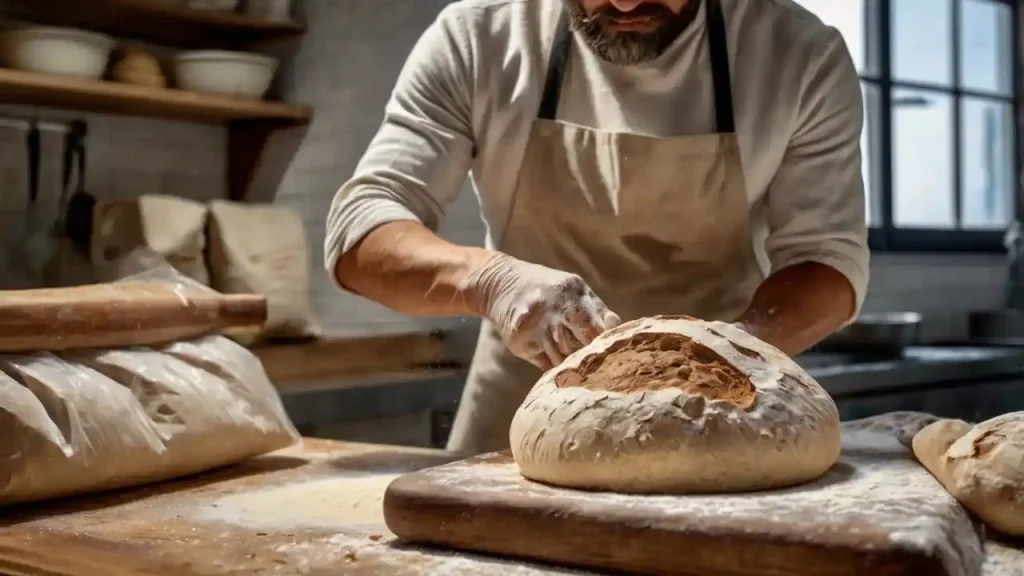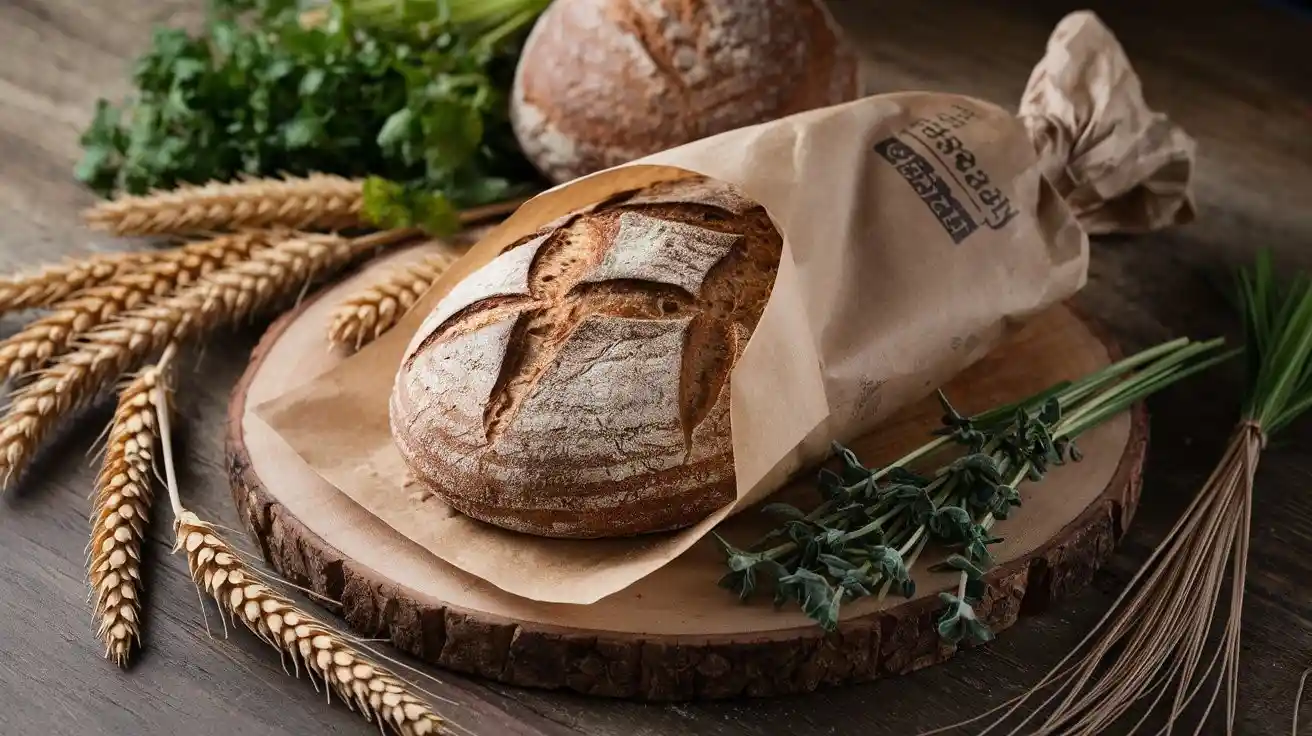The modern bread industry is evolving. With growing awareness around sustainability, bakers are looking for innovative ways to reduce their environmental footprint. From sourcing sustainable ingredients to minimizing waste, sustainable baking is quickly becoming a priority. This shift isn’t just a trend—it’s a necessary step towards creating a more eco-friendly world, one loaf at a time.
In this article, we’ll explore practical, eco-conscious practices that both home bakers and industry professionals can adopt to make bread baking more sustainable.
Table of Contents
- Introduction
- The Importance of Sustainable Baking
- Sustainable Ingredients for Eco-Friendly Bread
- Energy Efficiency in the Baking Process
- Reducing Waste in Bakeries
- Packaging Innovations: Minimizing Environmental Impact
- Water Conservation in Bread Production
- Case Studies: Eco-Friendly Bakeries Leading the Way
- How Home Bakers Can Contribute to Sustainability
- Conclusion: Baking a Better Future
Introduction
Baking bread has always been a deeply traditional craft, but with environmental concerns on the rise, the industry is undergoing a significant transformation. In response to climate change and resource depletion, bakers around the world are seeking ways to minimize their environmental impact. Sustainable baking practices aim to reduce the carbon footprint of bread production through responsible ingredient sourcing, waste reduction, energy conservation, and innovative packaging solutions. By making mindful choices, both home bakers and professionals can bake their way toward a greener future.
The Importance of Sustainable Baking
Sustainability in baking is about more than just the environment—it’s about ensuring that future generations can continue to enjoy the same high-quality ingredients and delicious breads we do today. The global food system, and bread production in particular, relies on natural resources like water, energy, and fertile soil. If we don’t manage these resources wisely, we risk depleting them.
Moreover, the bread industry generates significant waste, from uneaten loaves to single-use packaging. By focusing on sustainable baking, we can reduce waste, conserve resources, and minimize the negative impact of bread production on the environment. Sustainability should not just be a goal for large bakeries, but also for home bakers who want to do their part.
Sustainable Ingredients for Eco-Friendly Bread
One of the easiest ways to make baking more sustainable is to carefully select your ingredients. The bread you bake is only as eco-friendly as the ingredients you use.
1. Locally Sourced Ingredients
- Sourcing ingredients locally reduces the carbon footprint of transportation. Buying from local farmers and grain suppliers means fewer emissions from shipping. Local sourcing also supports community-based agriculture, fostering a sustainable food system.
2. Organic and Non-GMO Ingredients
- Choosing organic flour and other non-GMO ingredients is a great way to reduce your impact on the environment. Organic farming avoids the use of harmful pesticides and synthetic fertilizers, which can damage ecosystems and contaminate water supplies.
3. Whole Grains
- Whole grains require less processing than refined grains, making them a more sustainable option. They also provide more nutrients, benefiting both the environment and your health.
For a delicious, eco-conscious recipe, consider this Persimmon Bread Recipe, which makes use of seasonal, locally available ingredients.
Energy Efficiency in the Baking Process
Baking requires significant energy, but there are ways to reduce energy consumption without sacrificing quality.
1. Efficient Ovens
- Investing in energy-efficient ovens can drastically reduce the amount of energy used during the baking process. Look for ovens with energy-saving features such as better insulation or a steam injection system, which can help bake bread faster and at lower temperatures.
2. Batch Baking
- Another way to conserve energy is to bake in batches. Baking multiple loaves at once ensures that the oven is being used to its full potential, reducing the overall energy required to heat and operate the appliance.
3. Optimal Temperature Control
- Maintaining the correct oven temperature is essential for energy conservation. For more information on how to control oven temperatures for perfect baking, check out this helpful guide on oven temperature and baking techniques.
Reducing Waste in Bakeries
Waste management is a critical component of sustainable baking. Here’s how you can reduce waste in both commercial and home baking:
1. Repurposing Leftover Bread
- Instead of discarding unsold or leftover bread, many bakeries have started using it to make new products like bread pudding, croutons, or breadcrumbs. This not only reduces waste but also adds value.
2. Precision in Ingredient Measurement
- By measuring ingredients accurately, bakers can prevent excess from going to waste. Overproduction is one of the leading causes of food waste, so bakers must aim for precision and balance in their production cycles.
3. Donating Excess Bread
- When there’s more bread than can be sold, bakeries can donate it to local food banks or shelters. Many places are in desperate need of fresh food, and this is an excellent way to ensure that no loaf goes to waste.
Learn how small adjustments to your recipes, like those used in this Sourdough Sandwich Bread Recipe, can help reduce unnecessary waste in the baking process.
Packaging Innovations: Minimizing Environmental Impact
Packaging is a huge contributor to waste in the bread industry, but innovative solutions are emerging to reduce this impact.
1. Biodegradable Packaging
- Traditional plastic packaging takes hundreds of years to break down, contributing to long-term pollution. Switching to biodegradable or compostable packaging materials can significantly reduce the environmental footprint.
2. Reusable Containers
- For home bakers and small local bakeries, offering bread in reusable containers can be a game-changer. Encouraging customers to bring their own bread bags or containers helps reduce the need for single-use packaging.
3. Minimalist Packaging
- Using less packaging overall is a simple yet effective strategy. For example, wrapping bread in a simple paper bag instead of heavy plastic can cut down on waste.

Water Conservation in Bread Production
Water is a precious resource, and the bread industry uses a significant amount during both the baking process and ingredient production.
1. Efficient Water Use in the Bakery
- Bakeries can implement water-saving measures such as using low-flow taps and investing in efficient cleaning systems. By reusing water where possible, bakeries can significantly cut down on water waste.
2. Ingredient Sourcing
- Choosing ingredients that are grown using sustainable farming practices, such as those that use drip irrigation, can further reduce water usage. Supporting these practices not only conserves water but also promotes overall sustainability.
For more sustainable baking tips, check out these insights from industry professionals on reducing water consumption and other eco-friendly practices.
Case Studies: Eco-Friendly Bakeries Leading the Way
Several bakeries are already leading the charge in sustainable baking practices. These businesses have integrated eco-conscious practices that other bakers can learn from:
- Le Pain Quotidien: This international bakery chain sources organic ingredients and reduces waste by donating unsold products to local charities. They also prioritize energy efficiency in their stores.
- San Francisco Baking Institute: SFBI is committed to minimizing its environmental impact through the use of energy-efficient equipment and sustainable ingredient sourcing. They also educate their students on the importance of sustainability in the baking industry.
How Home Bakers Can Contribute to Sustainability
Sustainability in baking isn’t just for commercial bakeries—home bakers can make a significant impact by adopting eco-friendly practices.
1. Buy Local
- By purchasing ingredients from local farmers’ markets or nearby suppliers, home bakers can reduce the carbon footprint associated with ingredient transportation.
2. Use Every Bit
- Avoid wasting ingredients by finding creative ways to use everything. For example, overripe bananas can be turned into delicious banana bread. For an indulgent recipe, try this Chocolate Chunk Banana Bread.
3. Invest in Reusable Tools
- Use silicone baking mats instead of parchment paper, and opt for reusable containers to store your bread. Reducing reliance on single-use plastics in the kitchen is an easy step toward a more sustainable baking practice.
Conclusion: Baking a Better Future
Sustainability in baking is not just an industry trend—it’s a movement towards protecting our environment while still enjoying the foods we love. By making small changes, such as using sustainable ingredients, improving energy efficiency, reducing waste, and choosing eco-friendly packaging, we can make a positive impact on the planet. Whether you’re running a bakery or simply baking at home, these practices will help you create delicious bread while being mindful of the world around us.

